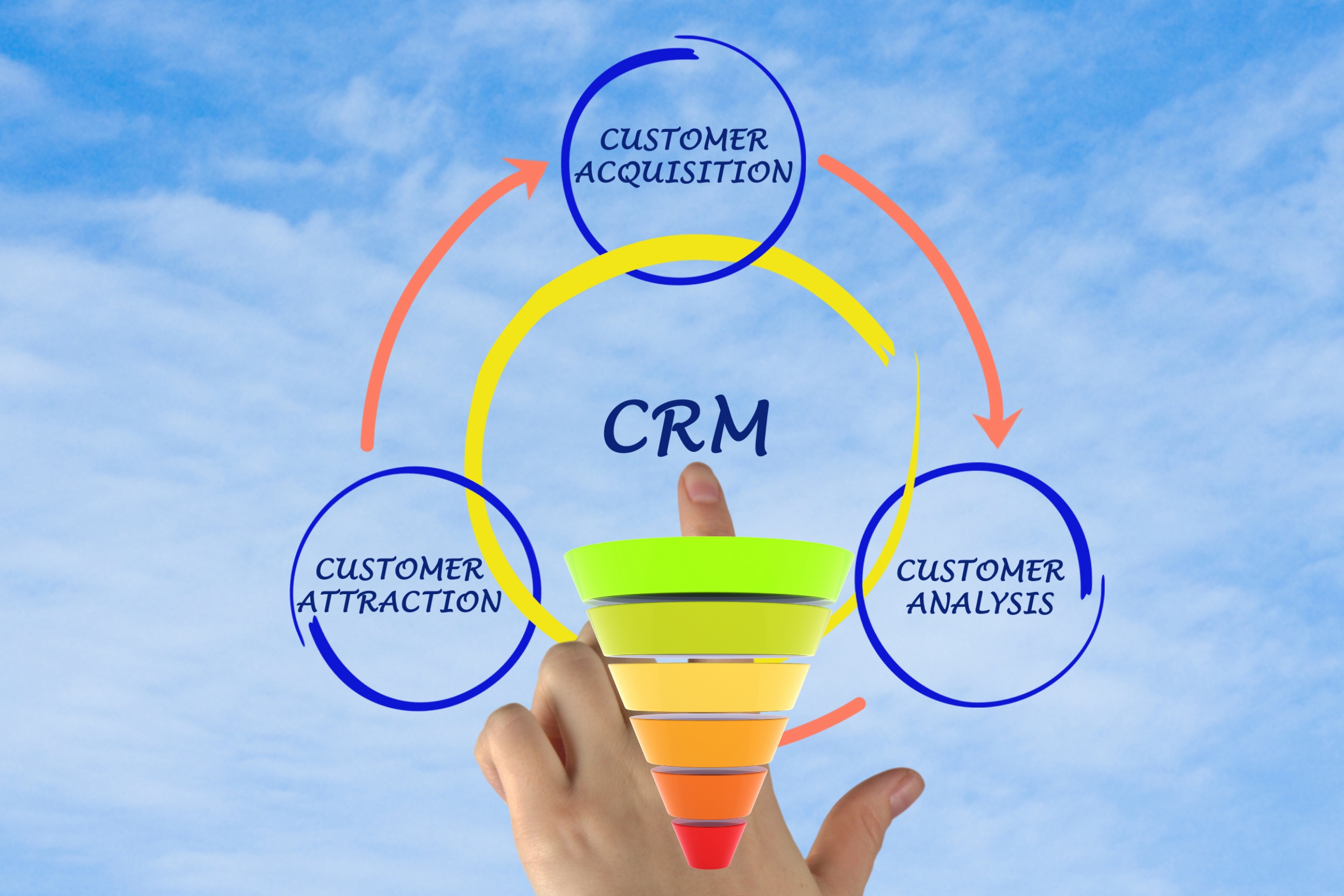Introduction
When it comes to advertising, every business and advertising firm knows how important return on investment (ROI) is. Many times, the amount of money spent on ads is one of the biggest parts of a marketing budget, but many efforts don’t work out as planned. People spend too much money on ads that get people to the site but don’t add any long-term value.
Most of the time, it’s not the ads themselves that are lost. Instead, it’s how leads are found, cared for, and turned into customers after the first click. Spending money on ads is like taking a chance without a plan. But when used with CRM channels, every dollar spent can be watched, improved, and made the most of. The goal of CRM funnels ROI is to ensure that no chance is lost by linking advertising efforts directly to systems for sales and customer retention.
Why Ad Spend Alone Isn’t Enough
It’s like putting money into ads that don’t lead to anything if you don’t have a funnel. People may click, but if there isn’t a clear way to move forward, most of their interest will leave. Agencies often find themselves in this situation: a lot of traffic but not many sales.
In reality, ad networks like Google and Facebook are only there to get people to click on ads, not to control what happens later. Agencies need to come up with ways to turn those clicks into money. The process doesn’t work when a route isn’t linked to a CRM. Leads get lost, follow-ups are put off, and useful information is not used.
ROI goes down not because the ads are badly made, but because people don’t do what they say they’ll do. That is not a problem if you build a good CRM funnel. It shows each lead the way and records every contact.
The Role of Funnels in Driving ROI
There is more to a path than just a home page. The organized trip is what takes a possible customer from not knowing about your business to buying from you. Leads are brought in by funnels, who then qualify them and move them closer to buying something. When this trip is linked to a CRM, it can be tracked and repeated
For instance, a company that runs Facebook ads for a client might send clicks to a funnel that has a form to collect leads. The CRM doesn’t leave those leads in a file or send them to an email address; it grabs them right away. After that, emails, texts, or even calls made by AI-powered processes keep in touch with the lead.
This system makes sure that ad dollars don’t just bring in visitors; they also bring in business possibilities. CRM funnels ROI is improved by cutting waste and increasing sales when they are combined into CRM systems.
Tracking Every Dollar Through CRM Integration
One of the worst things about spending money on ads is that it’s not always clear how well they’re doing. Marketers may know how many clicks were made, but it’s hard for them to link that information to real sales. This whole thing changes with a CRM flow.
Every lead from an ad can be tracked all the way through the process with CRM. Agencies can see not only how many people clicked, but also how many of those people bought something and how much money they made. This amount of openness changes everything.
For example, let’s say you spend $5,000 on ads that get you 200 leads. Since CRM wasn’t built in, it’s not clear if those leads turned into customers. With CRM channels, the system shows exactly how many people turned, how much they were worth, and what they did to get there. Now leaders are sure they can find out the real ROI and change their plans.
It’s easier for agencies to spend their money wisely when everything is clear. When it comes to campaigns, strategies that don’t work can be changed or thrown out, while strategies that do work gain more attention.
Automation: The Secret to Faster Conversions
Speed is very important in business. It’s more likely that a lead will buy if you contact them right away rather than waiting days. Still, many businesses still follow up by hand, which takes time and isn’t always correct.
This is taken care of by software and CRM systems. Individual answers are sent by workflows as soon as a lead comes into the system. If they sign up, they might get a thank-you email and a text message with a booking link. Reminders make sure that no follow-up is forgotten.
With this much automation, leads stay warm while competitors get ready to make their first contact. Agents get a lot more sales when they stay ahead of the competition. Instant answers not only help close more deals, but they also make customers happy and show potential customers that the company is skilled and quick to reply.
When the same amount of money is spent on ads, they bring in more money faster. It is clear that this changes the ROI of CRM platforms.
Enhancing Retention for Long-Term ROI
ROI isn’t just the first sale’s value. It’s also the value of a customer for life. It’s worth the money to run ads that get people to join for the long term instead of ads that only get one sale. Having CRM routes is important since they help you keep customers.
Set up marketing programs that run on their own to keep clients excited after the first sale. Customers feel linked and important when they get information, training tools, and special deals on a daily basis. Through the CRM’s displays, customers can always see how things are going and what the results are. The service is now even better.
When people stay with a business, ROI goes up. A client who does one job once is not as useful as one who does a lot of work over a year. With technology and platforms, agencies can turn ad spend into a long-term growth engine.
Personalization: Turning Data into Engagement
You can also make sure that each person gets a word that is just right with CRM platforms. Agencies don’t have to tell all of their clients the same things. Instead, they can change how they do things based on what their clients like and how they act.
So, if a customer buys a guide on how to market on social media, the system can give them other messages that are connected to what they were looking for. If a different lead is interested in email marketing, that service can be what they visit.
Adding your own voice to a talk makes it more interesting and important. Clients are more likely to stay with a firm that knows what they need before the client does. Leads are more likely to act if they feel like they are being heard. Personalized automation is one of the main reasons why CRM workflows ROI strategies work better than other methods.
Measuring and Optimizing Funnels Over Time
Building routes just once isn’t enough. Companies must keep tracking and making changes to their platforms in order to get the best return on investment (ROI). CRMs let you do this because they give you full information at all times.
You can see which ads get you the most leads, which outlets work best, and which steps keep clients interested. When they look at this info, they can make their work even better.
For example, if a lot of people leave a route after the landing page, the form or the message can be changed. If leads really respond to certain emails, that information can be used to help plan future efforts. This cycle of measuring and improving ROI builds up over time.
One of the best things about CRM-driven tools is that they let you try and improve routes all the time. For ad spend to not only work, it has to keep working better with each version.
Why Agencies Can’t Afford to Ignore CRM Funnels
It’s not enough to just run ads in today’s competitive market. If agencies don’t link their advertising plans to CRM channels, they could waste a lot of their funds. Lost chances, slow follow-ups, and clients leaving quickly cost a lot of money.
Businesses that use CRM pipelines ROI methods, on the other hand, have a big edge. You can guess how much money they have, how quickly leads turn into customers, and how long customers will stay with them. It’s possible for these perks to make or break an agency in a market where profits are low and competition is high.
There is more to CRM channels than just tools. They connect the money you spend on ads to growth you can see.

Conclusion
More than just interesting ads are needed to get the best return on ad spend. It needs processes that regularly collect, develop, and turn leads into customers. Too much value is lost from the click to the close without pipelines and CRM interaction.
Agencies convert ad dollars into a real investment by implementing CRM funnels ROI strategies. Funnels lead prospects through a planned path, technology makes sure that interactions happen at the right time, and CRM systems give you clarity and control. This leads to more sales, better customer engagement, and a growth model that is easier to plan for.
CRM channels are not optional for companies that want to grow; they are necessary. Agencies not only grow faster but also smarter when they connect ad spend directly to a system that grows ROI.


